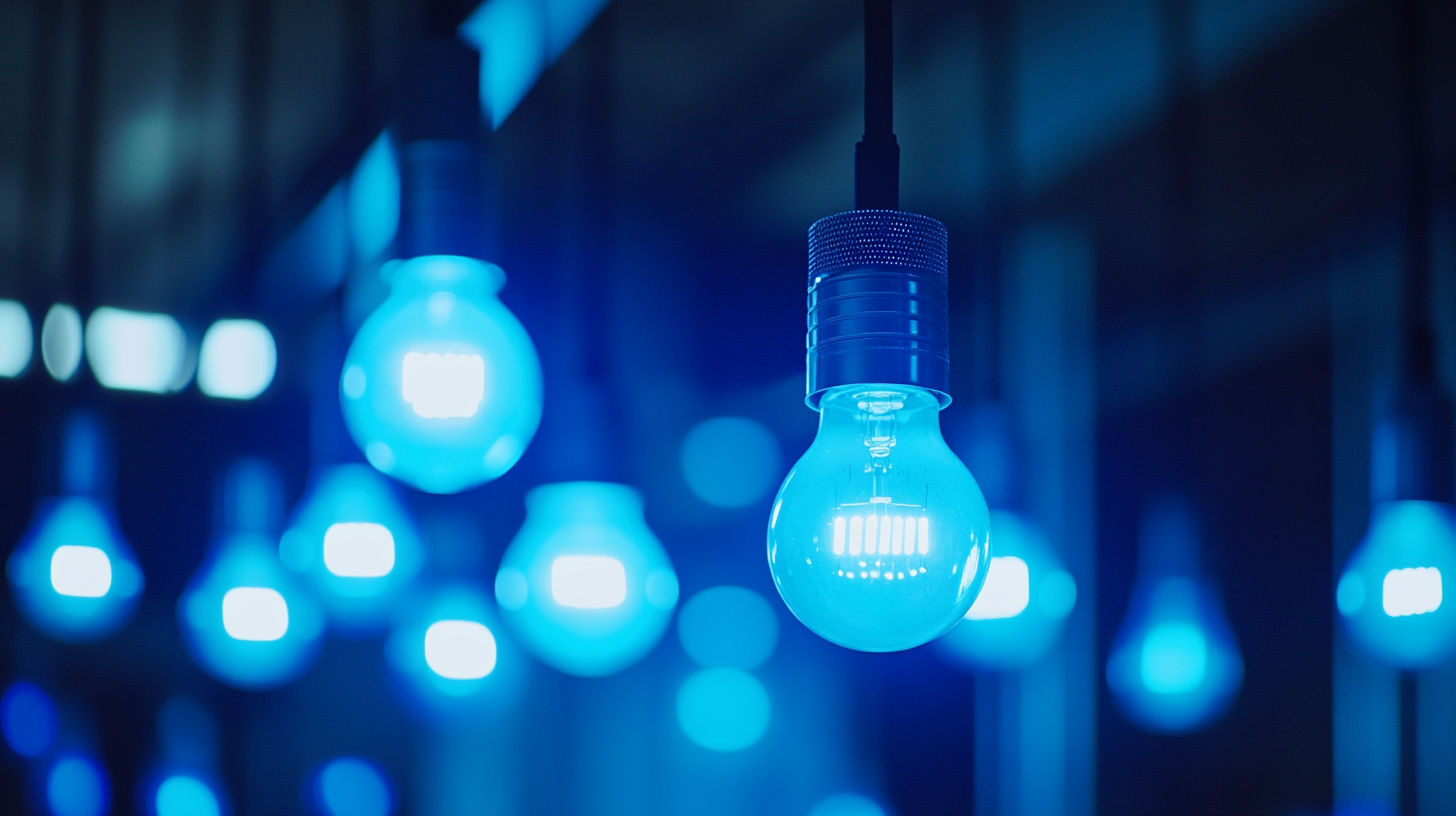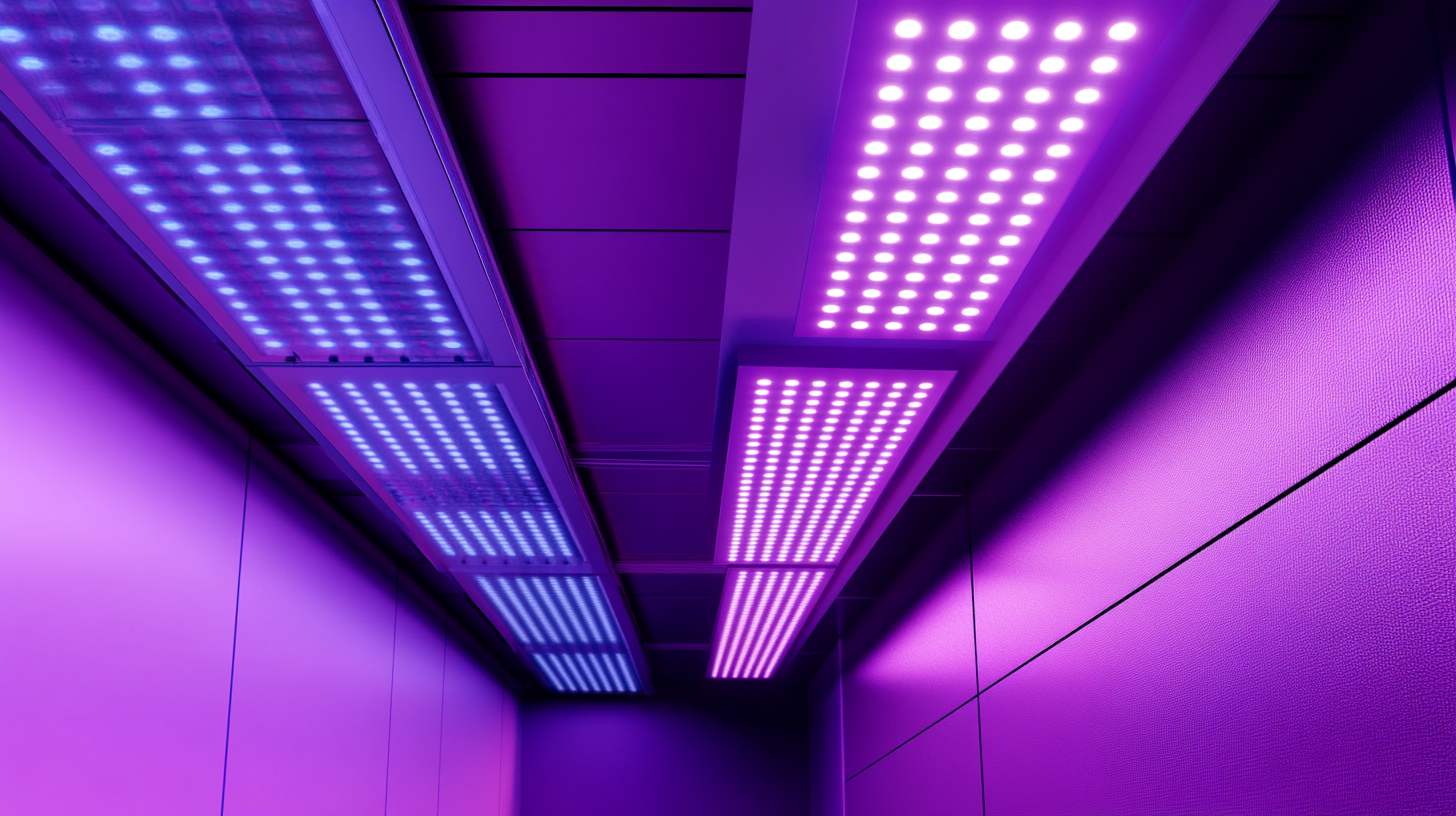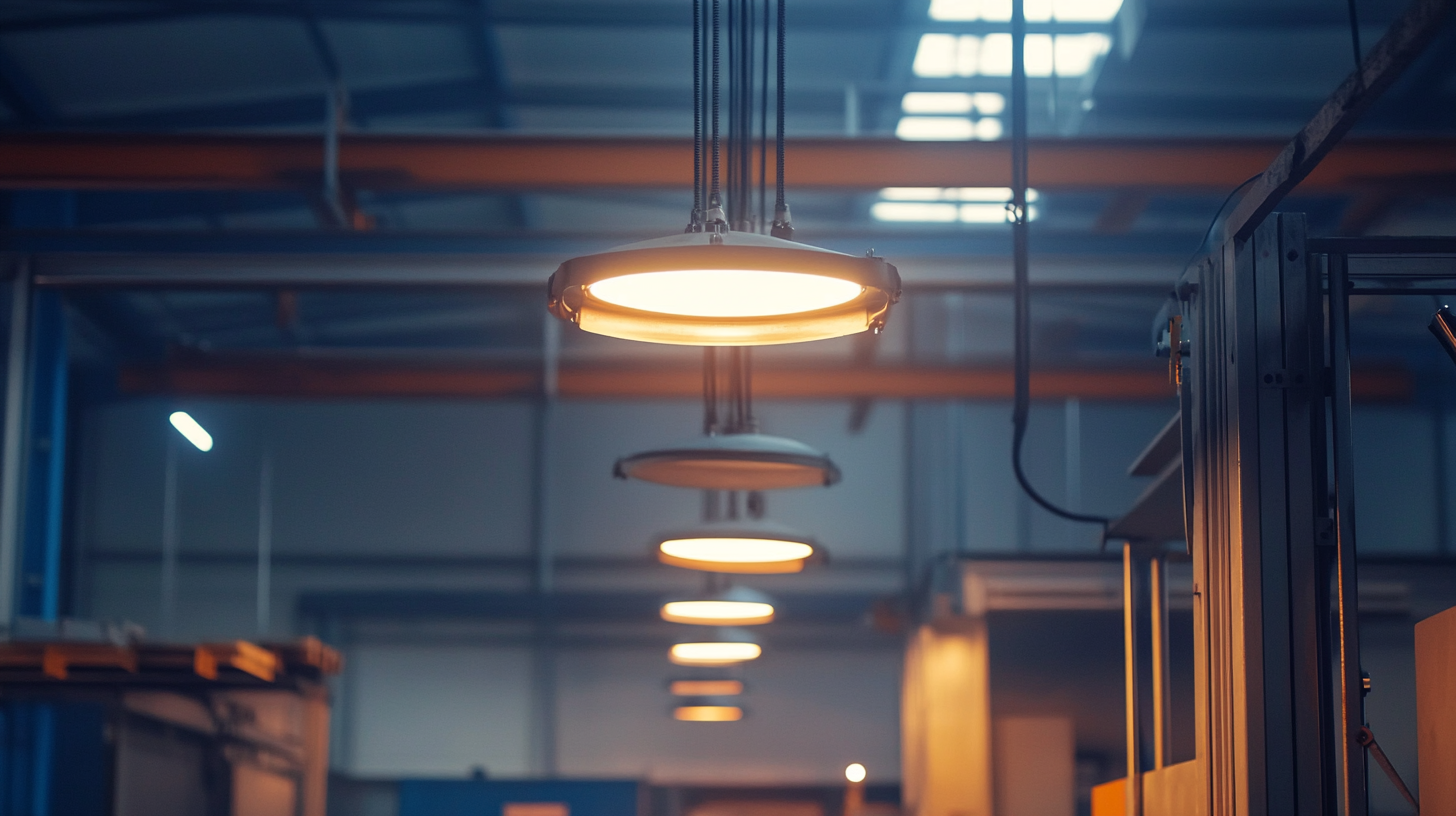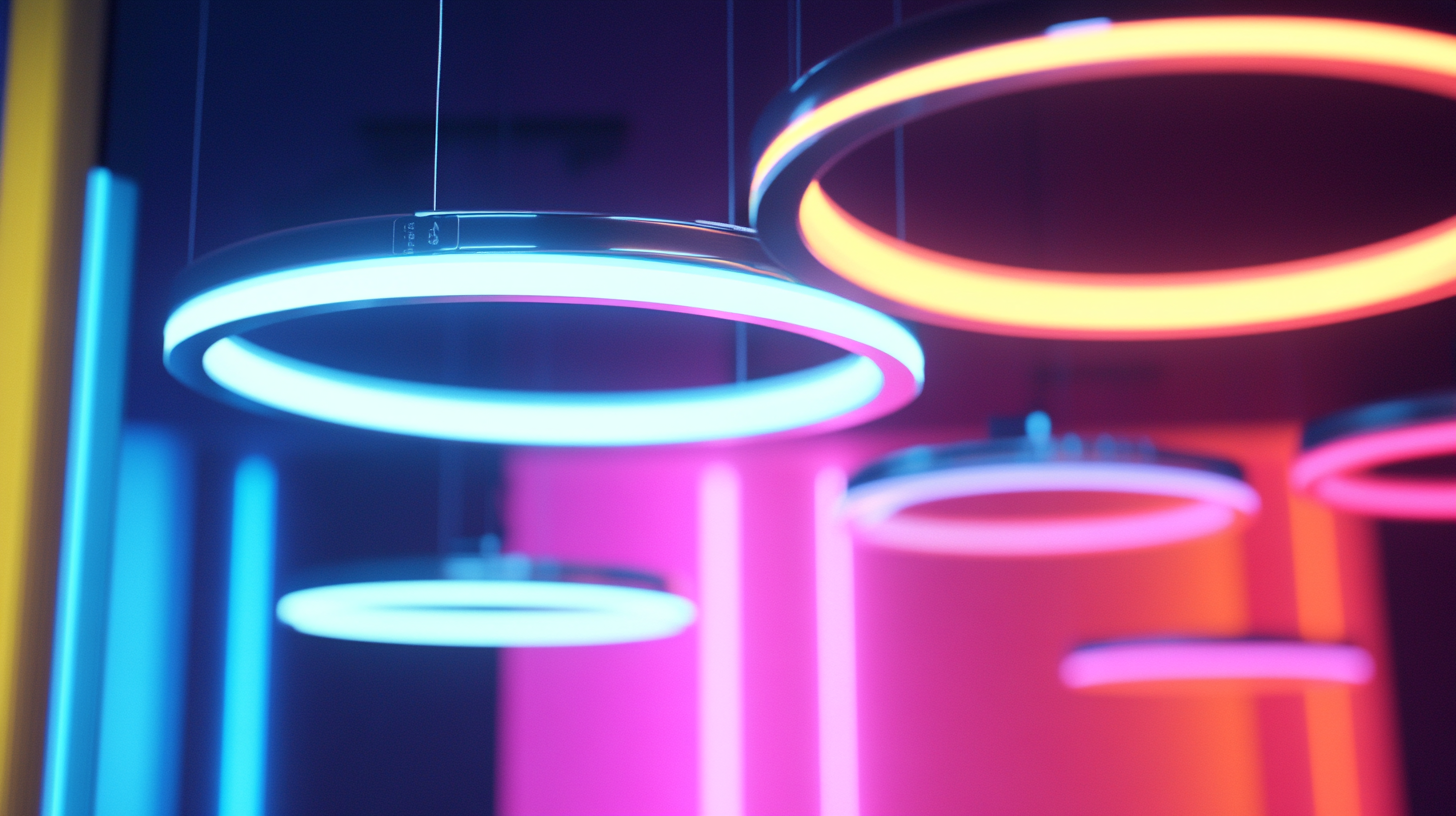Exploring Innovative Applications of LED Light Fixtures in Modern Industries
In recent years, LED light fixtures have emerged as a cornerstone of modern industrial applications, revolutionizing the way we approach lighting design. Far beyond their traditional use in residential settings, these innovative lighting solutions are being embraced across various industries for their energy efficiency, longevity, and versatility. As businesses strive to reduce their carbon footprint and enhance operational efficiency, LED technology stands out as a pivotal element in achieving these goals. This blog will explore the myriad ways in which LED light fixtures are transforming industrial environments, from enhancing workplace productivity to improving safety standards.
The adaptability of LED light fixtures is one of their most significant advantages, allowing them to meet the specific demands of diverse sectors such as manufacturing, healthcare, and agriculture. By providing tailored solutions that cater to unique operational requirements, these fixtures not only optimize energy consumption but also elevate the quality of light in critical workspaces. This introduction sets the stage for a deeper exploration into innovative applications of LED technology, shedding light on how industries can harness its potential to drive growth and sustainability in the modern era.

Emerging Trends in LED Technology for Industrial Lighting Solutions
Recent advancements in LED technology have sparked a revolution across various industries, transforming traditional lighting solutions into highly efficient, innovative fixtures. One of the most prominent trends is the integration of smart lighting systems equipped with sensors and connectivity features. These systems enable real-time monitoring of energy consumption and environmental conditions, allowing businesses to optimize their lighting setups according to specific needs. With the ability to adjust brightness and color based on the time of day or occupancy, companies can significantly reduce energy costs while enhancing the working environment. Another emerging trend is the focus on human-centric lighting (HCL), which emphasizes the impact of light on human health and productivity. By utilizing tunable white and colored LEDs, industries are increasingly adopting lighting solutions that align with our natural circadian rhythms. This not only improves employee well-being and concentration but also fosters a more dynamic workspace. As research continues to unveil the psychological effects of lighting, businesses are becoming more aware of the importance of creating an atmosphere that promotes both comfort and efficiency. Furthermore, sustainability remains at the forefront of LED innovations. As industries strive to meet environmental regulations and reduce their carbon footprint, energy-efficient LED fixtures are becoming a preferred choice. Many manufacturers are now focusing on recyclable materials and eco-friendly production processes, ensuring that these advanced lighting solutions are in line with global sustainability goals. This trend not only demonstrates a commitment to environmental responsibility but also appeals to a growing consumer base that prioritizes sustainability in their purchasing decisions.

Sustainable Benefits of LED Fixtures in Various Sectors
The integration of LED light fixtures across various industries is transforming not only the way we illuminate spaces but also how we approach sustainability. As businesses strive to reduce their carbon footprint, LED technology emerges as a frontrunner in promoting energy efficiency. Unlike traditional lighting systems, LEDs consume significantly less power, leading to lower electricity bills and reduced greenhouse gas emissions. This transition is particularly crucial in sectors like agriculture, where energy demands can be high, and innovative LED applications are being deployed to enhance plant growth while conserving energy.
In the manufacturing sector, the sustainable benefits of LED fixtures are equally compelling. Factories harnessing LED lighting experience enhanced productivity due to improved visibility and reduced heat output. This results in a more comfortable working environment, which can lead to higher employee morale and efficiency. Moreover, the durability of LED lights, with lifespans often exceeding 25,000 hours, means fewer replacements and lower maintenance costs, translating into long-term savings and reduced waste.
Additionally, in the retail industry, LED fixtures not only energize displays but also contribute to sustainable practices. By utilizing dimmable and smart LED systems, retailers can optimize energy consumption based on foot traffic, thereby reducing waste in operational costs. This innovative approach has a dual benefit: it creates an inviting atmosphere for customers while supporting the broader goal of environmentally-friendly business practices. As industries continue to embrace LED technology, the environmental and economic advantages become increasingly apparent, paving the way for a brighter, more sustainable future.

Case Studies: LED Lighting Transformations in Manufacturing Environments
LED lighting has become a transformative force in manufacturing environments, providing significant advancements in efficiency, productivity, and sustainability. One notable case study involves a large automotive manufacturing plant that integrated LED fixtures throughout its assembly lines. By replacing older fluorescent lighting with LED technology, the facility experienced a remarkable reduction in energy consumption by over 50%. The new lighting not only brightened the workspace but also enhanced worker visibility, leading to fewer errors and improved safety standards.
Another example can be seen in a food processing plant that struggled with maintaining optimal lighting conditions. The installation of customizable LED light fixtures allowed for variations in brightness and color temperature based on the specific needs of different processing areas. This adaptable approach resulted in a 30% increase in production rates, as workers were able to perform their tasks more efficiently under adequate lighting conditions. Moreover, the plant benefited from lower heat output from LEDs, which improved the overall temperature control within the facility.
In both cases, the switch to LED lighting exemplifies how modern industries are harnessing innovative technologies to transform traditional practices. The ongoing shift not only promotes energy savings but also enhances operational success, proving that smarter lighting solutions can redefine how manufacturing environments operate.

Smart Lighting Systems: Integrating LED Fixtures with IoT Technologies
The integration of LED fixtures with IoT technologies is revolutionizing smart lighting systems across various industries. According to a report by Grand View Research, the global smart lighting market is expected to reach $37.3 billion by 2026, reflecting a compound annual growth rate (CAGR) of 24.5% from 2019. This surge is driven by the increasing demand for energy-efficient solutions and the escalation of urbanization, where intelligent lighting plays a critical role in efficiency and sustainability.
One of the remarkable innovations in smart lighting systems is the ability to control LED fixtures remotely via mobile applications or centralized management systems. This level of control not only enables energy savings—estimates suggest that smart lighting can save up to 70% in energy consumption—but also enhances user experience through personalized lighting scenarios. For instance, in commercial settings, businesses can tailor their lighting to optimize employee productivity and comfort, a strategy supported by the European Lighting Industry Association, which reported that appropriate lighting can increase productivity by 20% or more.
Furthermore, the integration of IoT technologies with LED lighting facilitates predictive maintenance and real-time monitoring. By leveraging sensors and analytics, organizations can proactively identify issues before they disrupt operations. A study by the Lighting Research Center found that the use of such smart systems reduces maintenance costs by approximately 30%, a significant consideration for facilities management in sectors such as manufacturing and retail. This confluence of LED technology and IoT not only promotes operational efficiency but also contributes to the overarching goals of smart cities, fostering a more sustainable and responsive urban environment.
Enhancing Workplace Safety and Productivity with LED Innovations
In today’s fast-paced industrial landscape, enhancing workplace safety and productivity is paramount. One of the most effective ways to achieve this is through the innovative application of LED light fixtures. Unlike traditional lighting, LEDs offer not only energy efficiency but also advanced technology that directly contributes to a safer and more productive work environment. For example, adjustable color temperatures in LED lights can be tailored to specific tasks, reducing eye strain and improving focus, ultimately leading to better work performance.
Moreover, the integration of smart LED lighting systems allows for real-time monitoring and control, even integrating with IoT devices. This capability helps to maintain optimal lighting conditions depending on the time of day or specific work requirements. For industries such as manufacturing and warehousing, where safety is crucial, smart LED systems can enhance visibility in critical areas, minimizing the chances of accidents and improving overall safety standards.
Additionally, LEDs are now being designed with features like motion sensors and emergency lighting capabilities, further elevating safety metrics in the workplace. These features ensure that light is only activated when needed, conserving energy while also providing immediate illumination in case of emergencies. Such innovations not only foster a more secure working environment but also contribute to higher productivity by allowing employees to work efficiently under optimal lighting conditions.

